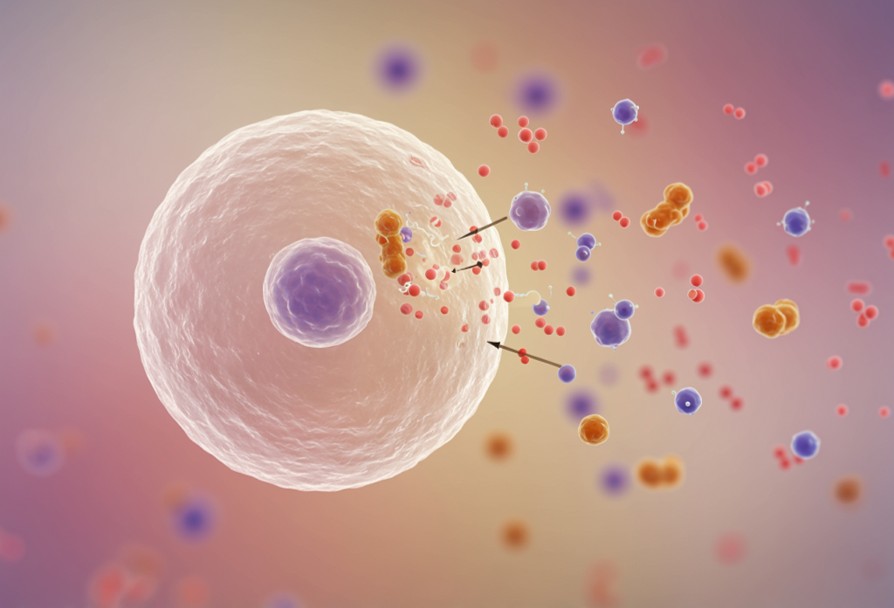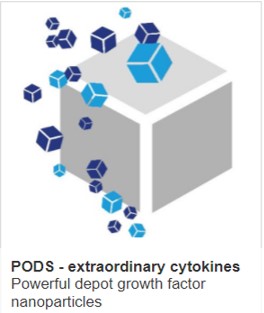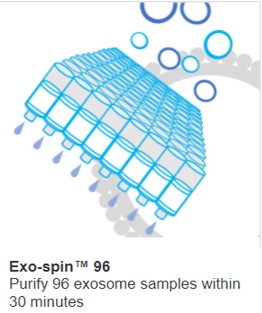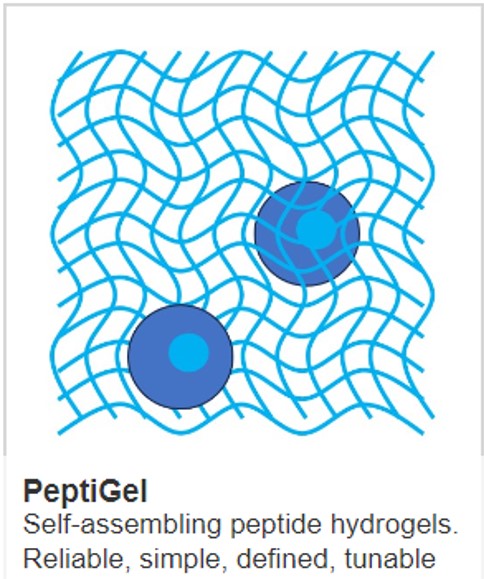Cell secretion therapies

Cells communicate by their secretions, impacting the behaviour of other cells. Cell secretion therapies use living cells to produce and secrete therapeutic substances that can aid in treating diseases. These include extracellular vesicles (EVs), cytokines, chemokines and hormones. Such therapies are at the forefront of regenerative medicine and immunotherapy.
Cell secretion therapies can either stimulate existing cells to secrete or they can use cell therapy, of either reprogrammed or naïve cells. Cell secretion therapies can also use proteins and complex structures, such as EVs, that are harvested and administered directly to the patient, with administering cells.
Modalities
Specific examples of therapies where therapeutic benefit is derived, at least in part, by secretion, include:
Mesenchymal Stem Cell (MSC) Therapy: MSCs are known for their ability to secrete a variety of bioactive molecules that can modulate the immune response, promote tissue repair, and reduce inflammation. They are being investigated for conditions like osteoarthritis, Crohn’s disease, and myocardial infarction.
CAR-T Cell Therapy: This involves modifying a patient’s T-cells to express a chimeric antigen receptor (CAR) that targets cancer cells. The modified T-cells also secrete cytokines that enhance their ability to kill cancer cells. CAR-T therapies have been approved for certain types of leukemia and lymphoma.
Islet Cell Transplantation: Used in the treatment of type 1 diabetes, this therapy involves transplanting pancreatic islet cells that can secrete insulin, helping to regulate blood sugar levels.
Exosome Therapy: Exosomes are small vesicles secreted by cells that can transfer proteins and genetic material between cells. They are being explored for their potential to deliver therapeutic agents and modulate immune responses in conditions like neurodegenerative diseases and cancer.
Leading Labs and Companies
Novartis: A leader in CAR-T cell therapy, Novartis developed Kymriah, the first FDA-approved CAR-T cell therapy for certain types of leukemia and lymphoma.
Gilead Sciences (Kite Pharma): Another major player in the CAR-T space, Kite Pharma, a subsidiary of Gilead Sciences, developed Yescarta, a CAR-T therapy for large B-cell lymphoma.
Cell Guidance Systems: Developing microscopic protein-blocks, known as PODS, to reprogram the secretome of monocytes. Focusing on cytokines and chemokines for the therapy of melanoma and prostate cancer.
Mesoblast: An Australian company focused on developing allogeneic cellular medicines, including mesenchymal precursor cell (MPC) therapies for inflammatory diseases, cardiovascular diseases, and back pain.
BlueRock Therapeutics: A biotechnology company that is part of Bayer AG, BlueRock is working on developing engineered cell therapies for neurological, cardiovascular, and autoimmune diseases.
Athersys: Known for its MultiStem cell therapy, Athersys is focused on developing treatments for neurological conditions, cardiovascular diseases, and inflammatory and immune disorders.
Sangamo Therapeutics: This company is working on gene and cell therapies, including ex vivo gene-edited cell therapies for hemophilia and other genetic disorders.
Fate Therapeutics: Focused on developing programmed cellular immunotherapies for cancer and immune disorders, Fate Therapeutics is working on off-the-shelf, iPSC-derived cell therapies.
Cellular Biomedicine Group (CBMG): This company is developing cell therapies for cancer and degenerative diseases, with a focus on CAR-T therapies and stem cell therapies.
Exosome Diagnostics: A leader in exosome-based diagnostics and therapeutics, this company is exploring the use of exosomes for delivering therapeutic agents and as biomarkers for disease.
These companies and labs are at the forefront of research and development in secreting cell therapies, pushing the boundaries of how we can use living cells to treat a wide range of diseases. Their work is contributing to the growing field of regenerative medicine and personalized medicine, offering new hope for patients with previously untreatable or difficult-to-treat conditions. The advancements in secreting cell therapies are paving the way for more effective and targeted treatments, with the potential to significantly improve patient outcomes and quality of life.
Key Areas of Research and Development
Regenerative Medicine: Efforts are focused on repairing or replacing damaged tissues and organs. This includes using stem cells to regenerate heart tissue after a heart attack or to repair cartilage in osteoarthritis.
Cancer Immunotherapy: Beyond CAR-T cells, researchers are exploring other immune cell therapies, such as monocytes, macrophages, natural killer (NK) cells and tumor-infiltrating lymphocytes (TILs), to enhance the body’s ability to fight cancer.
Autoimmune Diseases: Cell therapies are being developed to modulate the immune system in diseases like multiple sclerosis, rheumatoid arthritis, and lupus, aiming to reduce inflammation and prevent tissue damage.
Neurological Disorders: Stem cell and exosome therapies are being investigated for neurodegenerative diseases such as Parkinson’s, Alzheimer’s, and spinal cord injuries, with the goal of promoting neural repair and regeneration.
Diabetes: Beyond islet cell transplantation, researchers are exploring the use of stem cells to generate insulin-producing cells, offering a potential cure for type 1 diabetes by restoring the body’s ability to produce insulin naturally.
Future Directions
Personalized Medicine: Advances in genetic engineering and cell therapy are enabling more personalized approaches, where treatments are tailored to the genetic and molecular profile of individual patients.
Allogeneic Therapies: Research is ongoing to develop “off-the-shelf” cell therapies that do not require patient-specific cells, which could reduce costs and increase accessibility.
Gene Editing: Techniques like CRISPR are being used to enhance the efficacy and safety of cell therapies by precisely editing genes to improve cell function or reduce the risk of immune rejection.
Protein Editing: PODS is enabling permanent constitutive expression of proteins from phagocytic cells
Combination Therapies: Combining cell therapies together or with other treatments, such as drugs or radiation, is being explored to enhance therapeutic outcomes and overcome resistance mechanisms.
Regulatory and Manufacturing Innovations: Efforts are being made to streamline regulatory processes and improve manufacturing techniques to ensure the scalability and quality of cell therapies.
Overall, Cell secretion therapies represent a dynamic and rapidly evolving field with the potential to transform the landscape of modern medicine. As research progresses, these therapies are expected to become more refined, effective, and widely available, offering new hope for patients across a broad spectrum
IMAGE - Cell secretion CREDIT: AI generated / Cell Guidance Systems
Learn more about powerful technologies that are enabling research:



